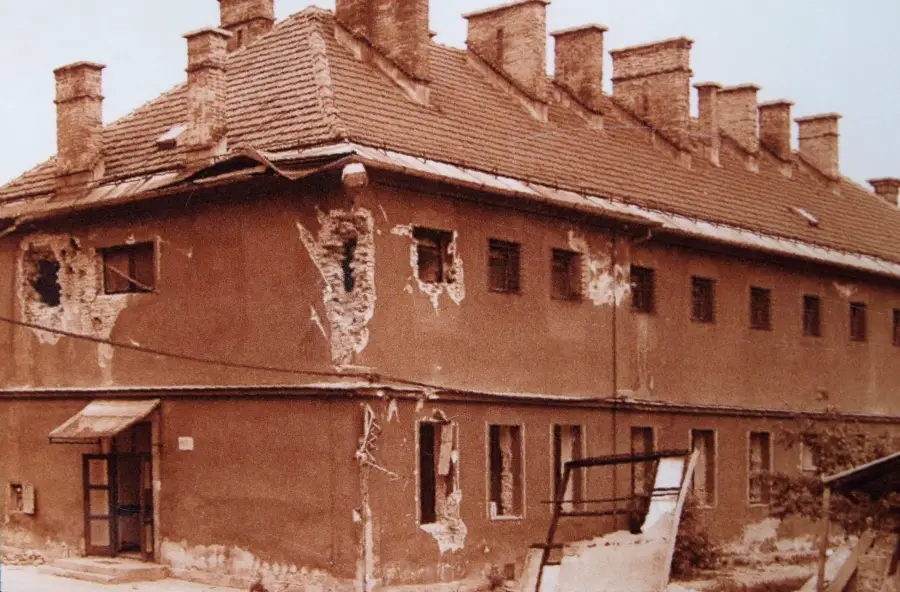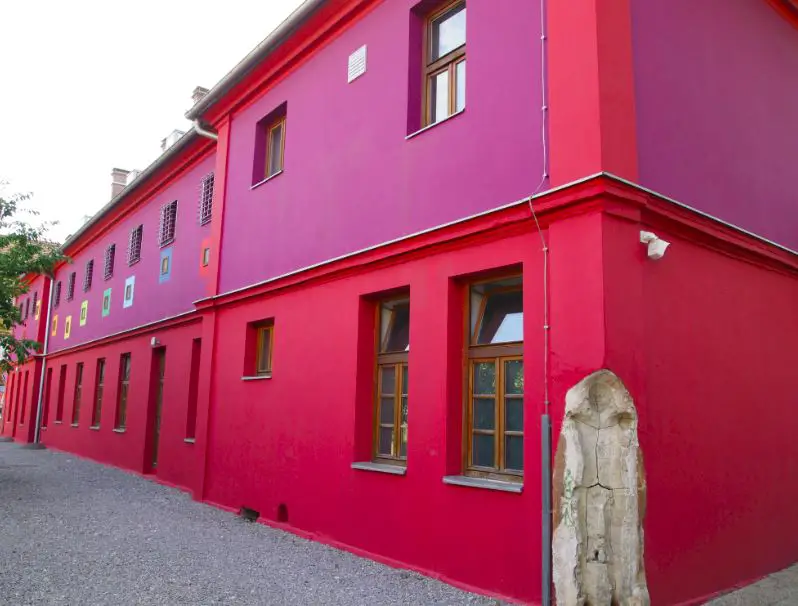Ljubljana related
In 1920 the Rapallo Treaty was signed by the Kingdom of Serbs, Croats and Slovenes (Kingdom of SCS, in 1929 renamed the Kingdom of Yugoslavia) and the Kingdom of Italy in Rapallo. The treaty defined a border between the two countries, assigning one third of the Slovene ethnic territory, Istria and part of Dalmatia, to Italy, which in turn recognized the Kingdom of SCS.
Along the Rapallo border, the Slovenian population of the former Austro-Hungarian Empire was divided into two parts. Slovenes who lived in Gorizia, part of Inner Carniola, Trieste, Istria and the Littoral were soon to experience the pressure of increasing fascism.
Italy entered WWI due to an alliance with Germany and Austro-Hungary that it had been part of since 1882. At the start of hostilities it refused to commit troops, claiming that the alliance was defensive in nature and that Austro-Hungary was the aggressor.
In 1915 Italy changed sides after the Triple Entente (France, Russia and Great Britain) promised it parts of the Austro-Hungarian territories under the secrecy of the so-called London Agreement (Italian: Patto di Londra), signed on April 26, 1915 by the representatives of Italy, the United Kingdom, France and Russia.
Italy pledged to declare war on the Central Powers, which it did less than a month later, on May 23, and was in return promised the following territories in case of the Entente’s victory:
Trst (Trieste), Trento, Gorica, Istria, Protectorate over Albania, the port of Vlorë, Dodecanese Islands, Zadar, parts of Dalmatia, the Soča River Valley and Southern Tyrol.
The agreement became public with the fall of Tsarist Russia, when Vladimir Lenin, a fierce opponent of war and secret diplomacy, in 1917 publically declared that the new Soviet state no longer recognized the Agreement.
In a new international situation that followed with the war’s end in 1918 the United States became involved as well. President Woodrow Wilson rejected Italian claims for Dalmatia, but agreed that the Slovenian Littoral and much of Istria, including Pula, belong to Italy.
Backed with such an international support Italy headed to Rapallo in 1920, where it was to sign a peace deal with a newly established, not yet recognised state.
About one-third of the Slovene ethnic territory remained outside the country of origin, all of Istria, Rijeka and Zadar with their immediate hinterland. The aforementioned territories immediately received a strong wave of violent Italianization through fascist attacks, arson, imprisonment, torture, internment and killing of Slovenes and Croats. Tens of thousands were expelled to southern Italy, and more than one hundred thousand were forced to flee to Yugoslavia and other countries.
In 1598 Ferdinand II of the Habsburgs issued a decree that all Protestant teachers and preachers had to leave Carniolan cities and squares in 14 days.
In Slovenia Protestantism was most effective and widely spread in the 16th century during the Reformation. The Protestant movement – its most popular form in Carniola was Lutheranism – supported the development of Slovenian literary language, which allowed for Slovenian literature and education to spread for the first time, and the first public library was opened. All this enabled and directed the development of Slovenia to a modern nation.
In response to all of this the Catholic Church initiated the Counter-Reformation, also called the Catholic Reformation, a period of Catholic resurgence which began with the Council of Trent (1545 – 1563) and, in greater part but not completely, ended with the conclusion of European wars of religion in 1648.
In Slovenian lands the Counter-Reformation arrived at the end of the 16th century and was led by the Habsburg Archduke Ferdinand II, who ordered the Protestant groups of of inner Austria to return to the Catholic faith or leave the country.
During the Counter-Reformation special religious commissions were established, which, accompanied by soldiers, expelled Protestant preachers, abolished Protestant schools, demolished Protestant churches and cemeteries, burned books, and expelled Protestant families who refused to renounce their religion. In Styria they were led by Bishop Martin Brener and in Carniola and Carinthia by Tomaž Hren.
Following the Counter-Reformation’s onset, publication of Slovenian books died out and Protestantism was only preserved in Prekmurje.
Currently the most famous living Protestant in Slovenia is perhaps Milan Kučan, Slovenia’s first president, who was born into a Lutheran teacher’s family in Prekmurje.
In 1917 on today’s date, the 12th and last Battle of Soča (Isonzo) started with the Austro-Hungarian forces being able to break into Italian frontline and forcing Italians to retreat about 100 km westward to the Piava River.
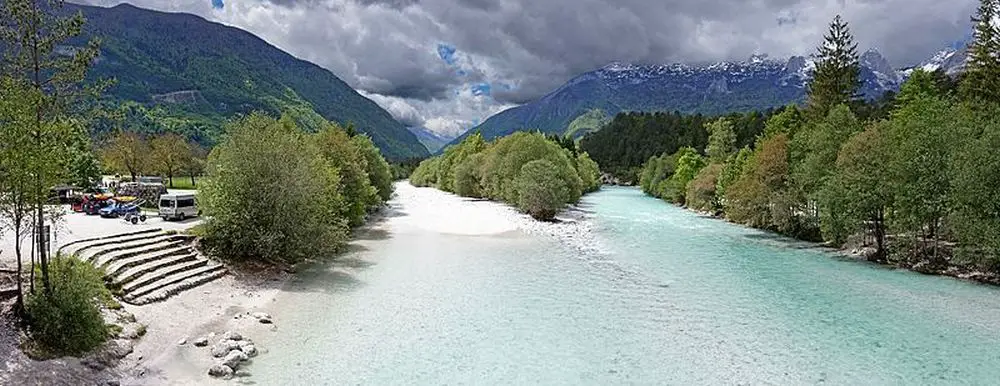
One of the Slovenia’s most scenic areas, the Soča (ITA: Isonzo) river valley, a filming location for fantasy movies like Narnia (Prince Caspian, 2008) and one of the main Slovenian tourist destinations, was also one of the bloodiest scenes of World War One. The last of these battles, the Battle of Kobarid (Caporetto), which started on today’s date, is also the one mentioned in Ernest Hemingway’s A Farewell to Arms.
Italy entered WWI due to an alliance with Germany and Austro-Hungary that it had been part of since 1882. At the start of hostilities it refused to commit troops, claiming that the alliance was defensive in nature and that Austro-Hungary was the aggressor.
In 1915 Italy changed sides after the Triple Entente (France, Russia and Great Britain) promised it parts of the Austro-Hungarian territories, in particular the Southern Tyrol, Austrian littoral (today’s Slovenia), and Dalmatian coast (today’s Croatia) after a Austro-Hungarian defeat. In April 1915, Italy declared war on Austro-Hungary and fifteen months later it declared war on Germany.
Austro-Hungarian troops, in anticipation of the Italian offensive, moved from the border with Italy to the left bank of the Soča River to await the Italian army in a terrain difficult to conquer.
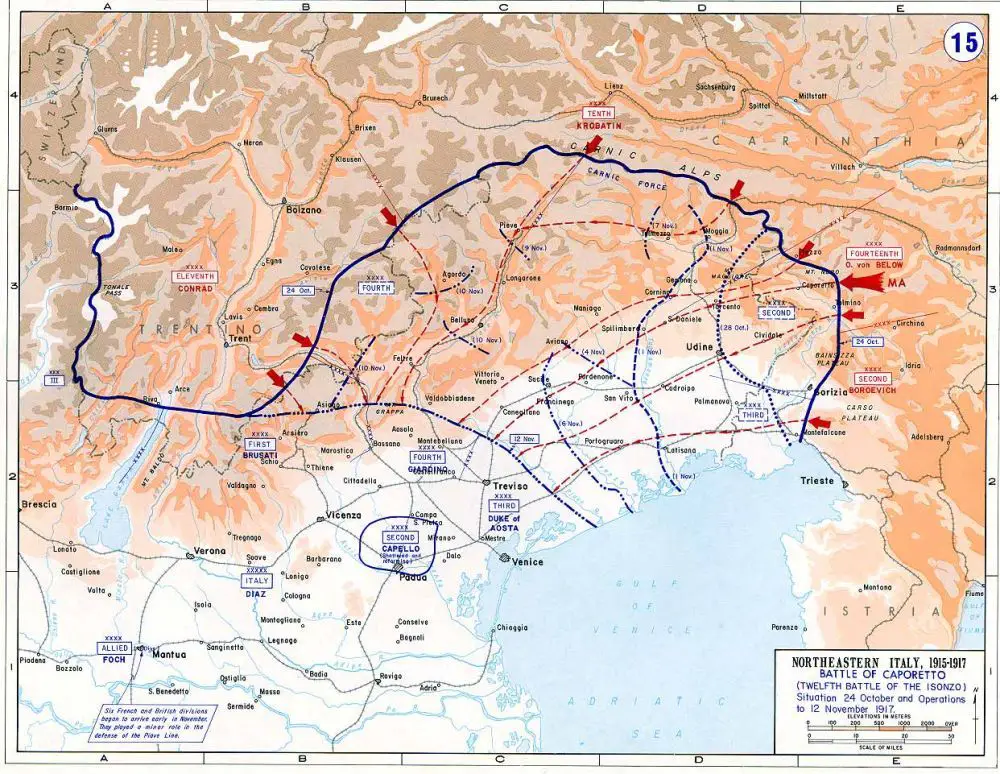
The numerically superior Italian army was led by Field Marshal Luigi Cadorna, a proponent of the frontal assault, who had planned to break into the Slovenian plateau, take Ljubljana and then threaten Vienna.
On the side of numerically weaker Austro-Hungarian army was Field Marshal Svetozar Boroević, a Serbian Croat and the only non-Austrian commander of this rank, who managed to persuade Emperor Franz Joseph that what was believed to be an indefensible part of Slovenia was is in fact worth defending, which placed him in command of Soča.
The terrain did in fact prove difficult for the Italian offensive, and the battle line practically didn’t move for the first eleven battles that took place over the following two years, exerting tremendous suffering not only on the troops but also the local population, who found themselves in the middle of the crossfire, famine and disease.
In the second half of 1917 the Austrian-Hungarian army was not only exhausted by years of war in steep mountain trenches, but also losing morale due to lack of progress and the aspirations for independence by various peoples under imperial rule. Emperor Karl I (Charles I), Franz Joseph’s successor and the Austrian commanding officer, decided to ask the Germans for help. If the Soča Front had fallen, the Austrian army would have collapsed and German offensive in the western front might fail as well. The Germans agreed and in September 1917 the plan for attack was drawn which was supposed to happen on October 22, but the date eventually changed to the 24th due to preparation delays.
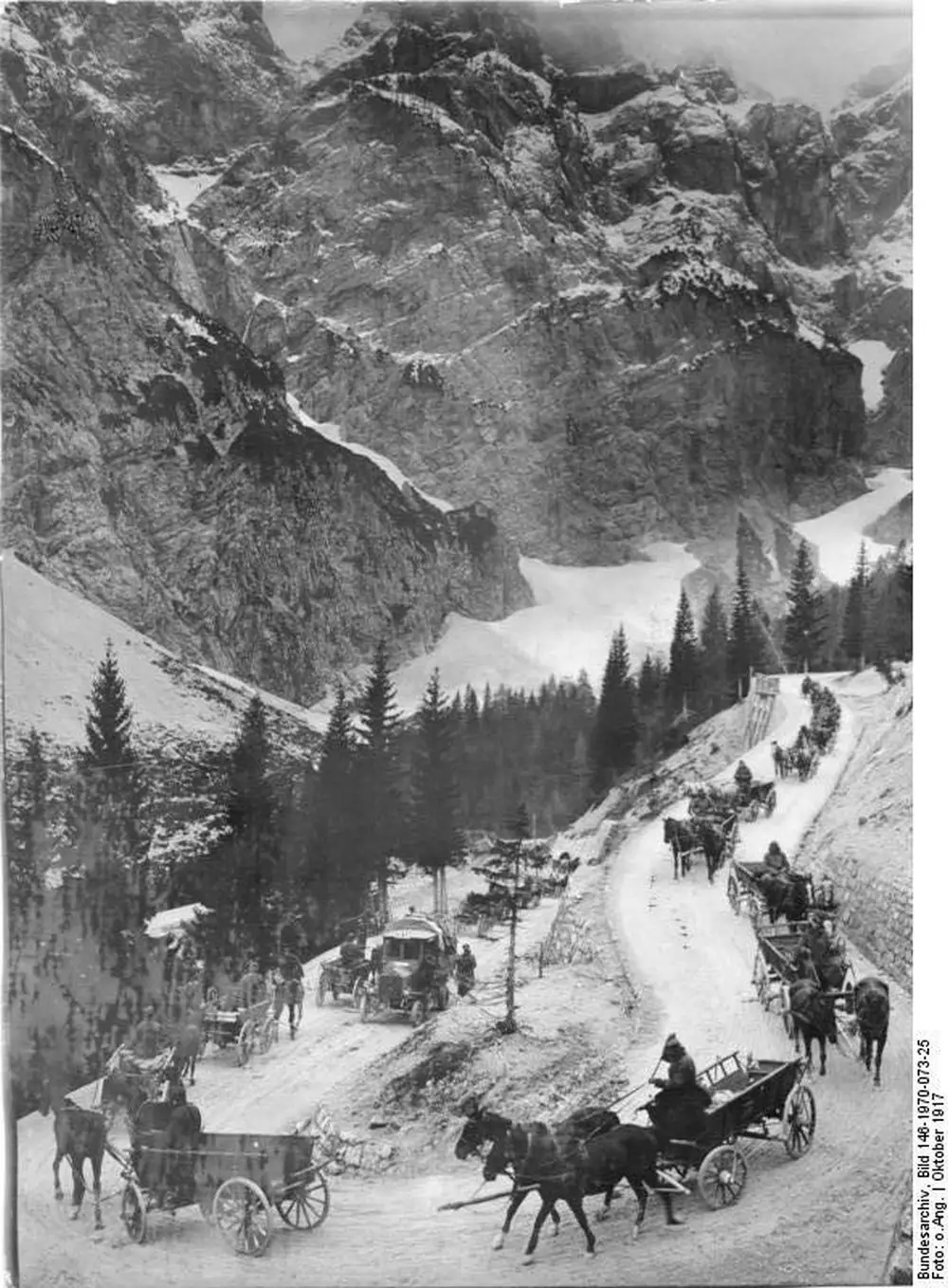
Italian commanders began suspecting that Austria was preparing an offensive on September 14th, when it the closed border with Switzerland to prevent information from being leaked. By the end of the month the Italian command headquarters were informed about the presence of the German officers in the Tolmin area and Grahovo by Bača, and then about the arrival of Germans to Ljubljana and Tolmin at the beginning of October.
Despite all the warnings that an attack would occur somewhere in the upper Soča valley, the Italian commander Cardona believed that the Austrian offensive would occur at Banjšice plato near Gorica, so he moved most of the artillery units there.
The traditional military wisdom, which Cordona had followed, dictated the preferential capture of the hills from where the surroundings could be controlled. The German and Austrian strategists turned the idea upside down, planning to attack through the valley where the enemy was most vulnerable, in order to surround the heavily fortified hills and take them down one by one in the second phase of the offensive. In realization of this plan, they got a lot of help from the weather, as on the day of the attack it rained in the valley and snowed in the mountains.
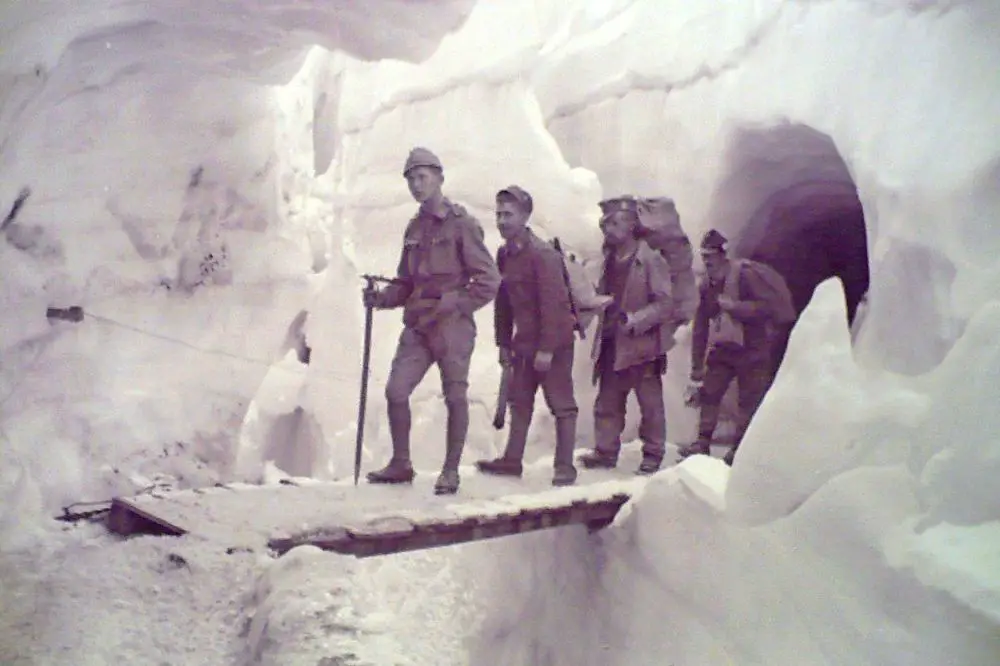
Generally speaking, the 12th battle of Soča, also known as the Battle of Kobarid or the Battle of Caporetto, is considered the first to successfully employing the vague strategy of blitzkrieg commonly believed to be a WWII invention: infantry break through the weakest link in the adversary’s defense line, getting through behind its back and finishing it with artillery after it tries to follow.
Italian defense lines were well-fortified and equipped. In fact, the positions were carved into stone walls, making them accessible from the front face only. To get to their positions, which were distributed in three parallel defense lines, one would also have to get over the wire hurdles first.
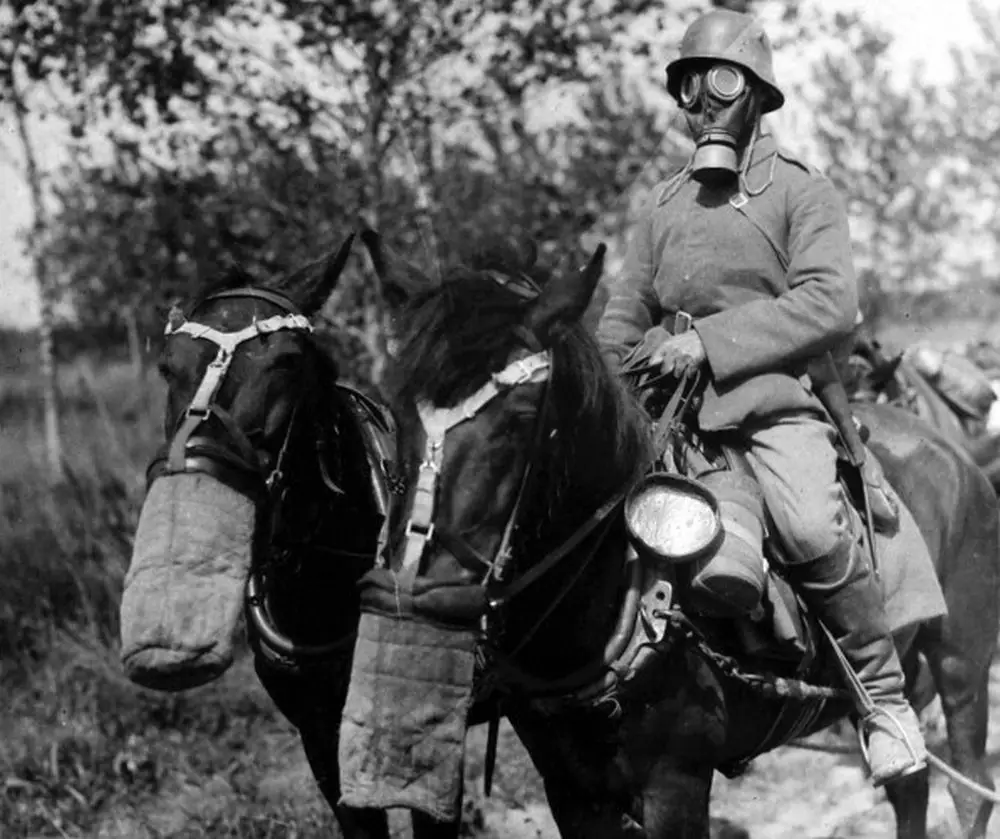
The Austro-Hungarian and German army decided to solve the problem by the use of gas, which had already been used by the Austrian army in 1916. The gas used then was chlorine. This time, two gasses were prepared to deploy, chloroarsine and phosgene, the first one being a sneezing agent which seeped through the gas mask filters and caused an irritation which would force soldiers to take their masks off and thus inhale the second gas, phosgene, the deadly poison.
The battle began at two in the morning, when more than 111,000 gas grenades, the first the ones marked with blue crosses, then the ones with green crosses, were shot at the Italian side. Then the front was quiet till six in the morning, when full fire opened at the attempts to fill in the gaps in the defense lines. The infantry then moved through the valley with almost no resistance, advancing about 25 kilometers towards Italy on the first day alone.
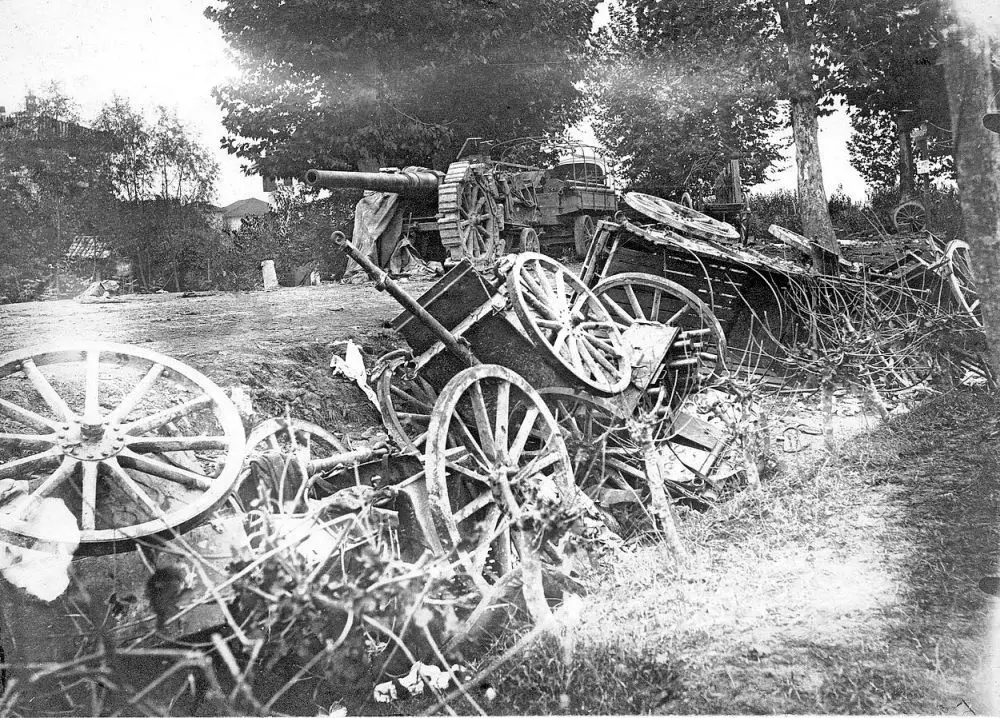
Eventually the attackers were stopped at the Piava River, where they were decisively defeated in the Battle of Vittorio Veneto in October 1918.
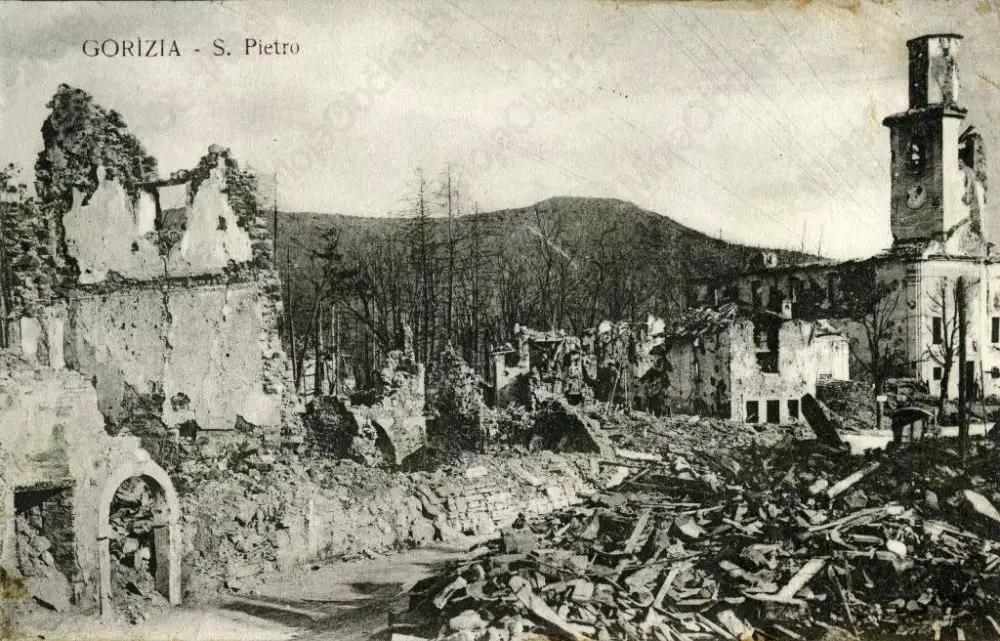
Austria-Hungary surrendered on 11 November 1918. The larger part of Carniola joined the Kingdom of Serbs, Croats and Slovenes (Kingdom of Yugoslavia), while Italy got its promised spoils of war (apart from Dalmatia) that included the former Austrian littoral with the border line drawn just under the peak of Triglav.
In 1943 the first overseas brigade was formed in Carbonara, Italy. It consisted of 1886 fighters from the Slovenian 1st and 2nd battalions, 3rd Montenegrin battalion and 4th battalion, which was Croatian in origin. A month later when the brigade was deployed to the island of Hvar two more battalions joined in, mostly comprised of Slovenian soldiers.
In WWII fascist Italy arrested over 60,000 Slovenes from the occupied Western Slovenia and sent them to concentration camps as political prisoners, alongside several thousand Croats and Serbs. Furthermore about 10,000 Slovenes and Croats were mobilised and mostly deployed in penal work units or so-called special battalions as citizens of Italy, and an additional 6,000 antifascist activists from the Littoral and Istria, were sent to jails and special camps in the Italian hinterlands and islands, such as Lipari, Ustica and Ponza.
Italy capitulated in September 1943 and the internees came under the supervision of the occupying allied forces. Most of the Slovenes and other Yugoslavs located in the north of the country managed to escape to the Littoral and Istria, while the majority, located in the central and Southern Italy, were gathered by the Allies in various local camps and then moved to a single major camp in Carbonara near Bari, Italy.
Right after the capitulation of Italy, the National Liberation Army and Partisan Detachments of Yugoslavia (NLAPDY) delegation came to the camp and established its base there in agreement with the occupying Allied forces. The NLAPDY then negotiated to establish the self-organisation of life inside the camp and dismissed the Chetnik guards (mostly from the Serbian nationalist and royalist army, which collaborated with the Nazis on many occasions –- the main military force the Allies collaborated with in the territories of Yugoslavia until 1943). At the same time the camps committee of the Communist Party of Yugoslavia was established alongside the 1st. Overseas Brigade. In November of the same year the internees were moved to Gravina, which had its own command headquarters and guards, and was also a gathering point for all the subsequent arrivals of Yugoslavian expats, which continued to arrive there in the subsequent year.
The occupying powers and Marshal Badoglio, who was in charge of the Carbonara camp, disagreed on the transfer of former members of the Italian army – mobilized Slovenes and Croats – to the Yugoslav National Liberation Army, causing more of them to flee from Allied assembly camps to NLAPDY assembly points in Taranto, Naples, Foggia, Brindisi and then to Gravina.
About 20,000 of the Littorals and Istrians, who were not in contact with the NLAPDY during the liberation of Italy in Sardinia, were transferred to Corsica in spring 1944 and then to southern France, where they were detained until December 1945.
After being mobilized into the Italian army thousands of Littorals and Istrians were sent to the Italian occupied territories in African Ethiopia, Somalia, Eritrea and Libya. They were captured there by Allied troops and imprisoned in prison camps in Kenya, Sudan, Egypt, Algeria and some other countries. From there, after the invasion of Yugoslavia in April 1941, they joined the emerging Yugoslav royal army abroad. The latter lost homogeneity as a result of the controversial emigration of the Yugoslav government and the dual policy of General Draza Mihailović, and by that time a large part of these troops had also joined the NLAPDY overseas brigades in Italy.
Nazi Germany also mobilized Slovenes from its occupied territories of the Upper Carniola (Gorenjska), Styria (Štajerska) and Carinthia (Koroška), many of whom crossed over to the Allies after the invasion of Normandy in June 1944. Two thousand eight hundred of them established an overseas brigade in London.
In the years of 1943 and 1944, five overseas brigades were formed, and several other artillery and special units that participated in the fight against the occupying forces in Yugoslavia. In all the overseas units consisted of about 18,000 troops, more than 1,000 of whom fell in battle.
In December 1943, the 1st Overseas Brigade was transferred to the island of Korčula to defend it on December 22- 24, 1943, when the Germans landed on the island. The brigade suffered heavy casualties and retreated to Vis. Subsequently, members of the 1st Overseas Brigade participated in the seventh offensive and landing on Drvar, and then were deployed to Serbia, where they participated in the fight for the liberation of Belgrade. Following this operation, the 1st and 6th Proletarian Divisions, whose members had previously been members of the 1st Overseas Brigade, participated in the Srem front, then advanced through Slovenia towards Trieste.
In 1834 the first trade school in the Slovenian lands was established in Ljubljana by Jacob Franz Mahr, its owner and first principal. The language used in the school was German, and the school was intended for wealthier kids of the local bourgeoisie to learn trade skills on the one hand, and assimilate on the other, and in line with Austrian de-nationalisation efforts targeting the empire’s Slavic majority subjects.
In 1855 Mahr bought one of Ljubljana’s most renowned hotels at today’s Krekov Trg by the central vegetable marketplace, where he moved his school. The building soon gained its current name, that is the Mahr House, and in 1865 the upper two floors were built.
In 1918 the Mahr House was taken over by the city government, which moved in several of its offices. Since 2003 the ground floor of the house hosts one branch of the Slovenian Tourist Information Centre, while the upper floors have been transformed into several apartments.
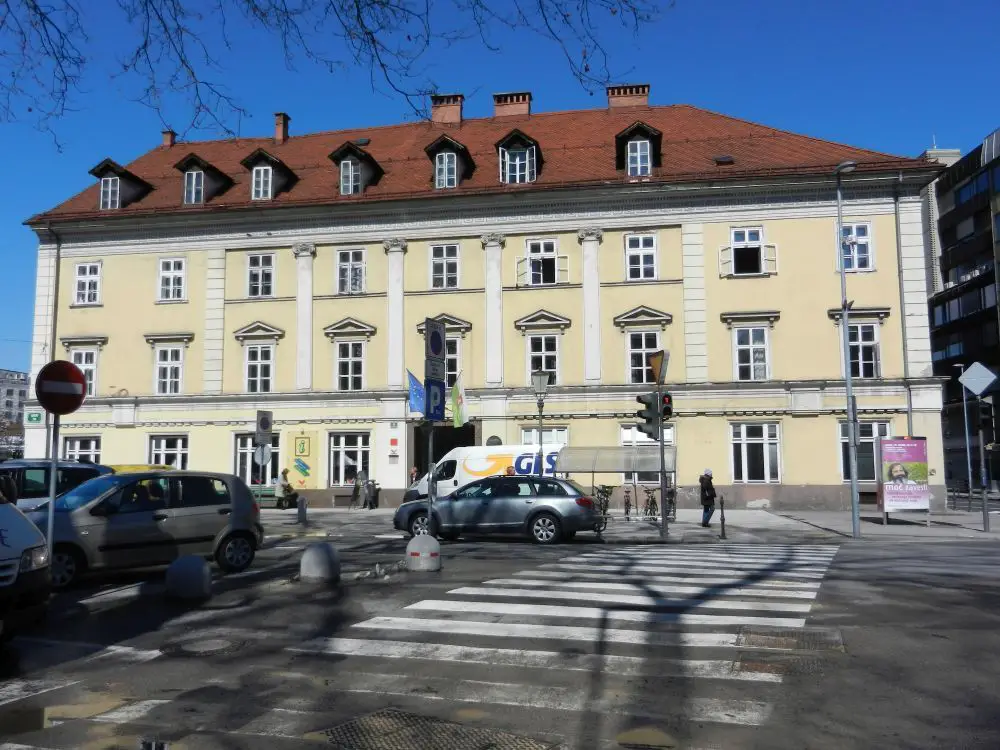
From 1865 to the WWI the school also ran a bilingual department, following the ultraquistic doctrine of introducing the primary language of the Slovenian pupils as a tool for more effective learning in the preferred language, German. Ultraquism as denationalising bilingualism in schools still remains a relevant issue of the Slovenes living in Austrian Carinthia.
The rarely used word ultraquism originates in the Latin sub utraque specie, meaning “in both kinds”, and originally referred to a Christian dogma proposed by pre-protestant Hussites (after the Czech Jan Hus) who maintained that the Eucharist should be administered “in both kinds”, that is as bread and wine to all the congregation, including the laity, since at the time the wine was only for the priests to enjoy.
As an author living in Ljubljana, much of my work is inspired by Slovenia and the region. Most recently I was inspired to write an alternate history of the breakup of Yugoslavia, which asks the question: What if Marshal Tito had named a totally untrained and untested successor? The first book centers on Slovenia and its war of independence. Here are ten interesting things that I learned, or discovered more about, while doing research for Tito’s Lost Children: War One Slovenia.
1. If you live in Ljubljana, Marshal Josip Broz Tito died in the hospital you probably go to.
Josip Broz Tito died at the University Clinical Center in Ljubljana on Njegoševa cesta. In 1980 it was one of the newest and most advanced medical centers in Yugoslavia, so he chose to travel to Ljubljana for treatment. The procession that took his body back to Belgrade on his famous Blue Train started from the Slovenian Parliament and what is today called Republic Square. A bit over ten years later this was the same location where Slovenian independence was declared.
Related: May 4 in Slovenian History: Tito Dies in Ljubljana
In the Tito’s Lost Children trilogy, eleven years after his death, Tito’s fictional successor is tasked with stopping the breakup of Yugoslavia, avoiding capture by Serbian nationalists and preventing a wider war and ethnic cleansing in the Balkans.
2. The rest of the former Yugoslavia has stereotypes that Slovenes are cheap, that Slovene girls are ‘easy,’ and that Slovene men are wimpy.
In the rest of the former Yugoslavia, ‘going Dutch’ is apparently referred to as ‘being Slovene.’ Despite – or possibly because of --the fact that Slovenia was the wealthiest member republic of the former Yugoslavia, Slovenes have a reputation as the misers of the region. In my experience the Slovenian attitude toward money seems to be more of an overt concern with good accounting. Be sure you keep the receipt for that one piece of burek you just bought!
There is also a stereotype that Slovene girls are ‘easy’, possibly because most interactions between Slovenes and people from other Yugoslav nationalities took place on ‘spring break’ style vacations in Croatia. As a single guy living here, I must report that I don’t have much evidence that this stereotype is true.
Perhaps related to the above, there is also a perception in the Balkans that Slovene men are wimpy. However, Slovenes are quick to point out that this is not the case and that brash behavior is simply frowned upon more here than it is in the rest of the former Yugoslavia.
In Tito’s Lost Children, the main characters meet Slovenes who seem to fulfill these stereotypes, only to turn out to be slightly misunderstood once we actually get to know them.
3. Slovenia declared independence one day before they announced that they would.
88.5% of Slovenians voted for independence in a referendum held on December 23rd 1991, which gave the government six months to implement the decision. The government took almost the entire six months to prepare for the independence and a probable conflict with the Yugoslav People’s Army. However, independence was declared one day early, before the waiting period expired, in order to catch the People’s Army off guard. This surprise move possibly made Slovenian victory easier. It also plays a role in Tito’s Lost Children.
4. Slovenska Cesta used to be named Tito Street.
It seems almost obvious once you know that ‘Tito Street,’ one of the main roads in the center of Ljubljana, was renamed ‘Slovenian Street’ upon independence. The names also changed for a lot of other landmark places in the center of the city. These include: Revolution Square, present day Republic Square, and Liberation Square, which is today’s Congress Square.
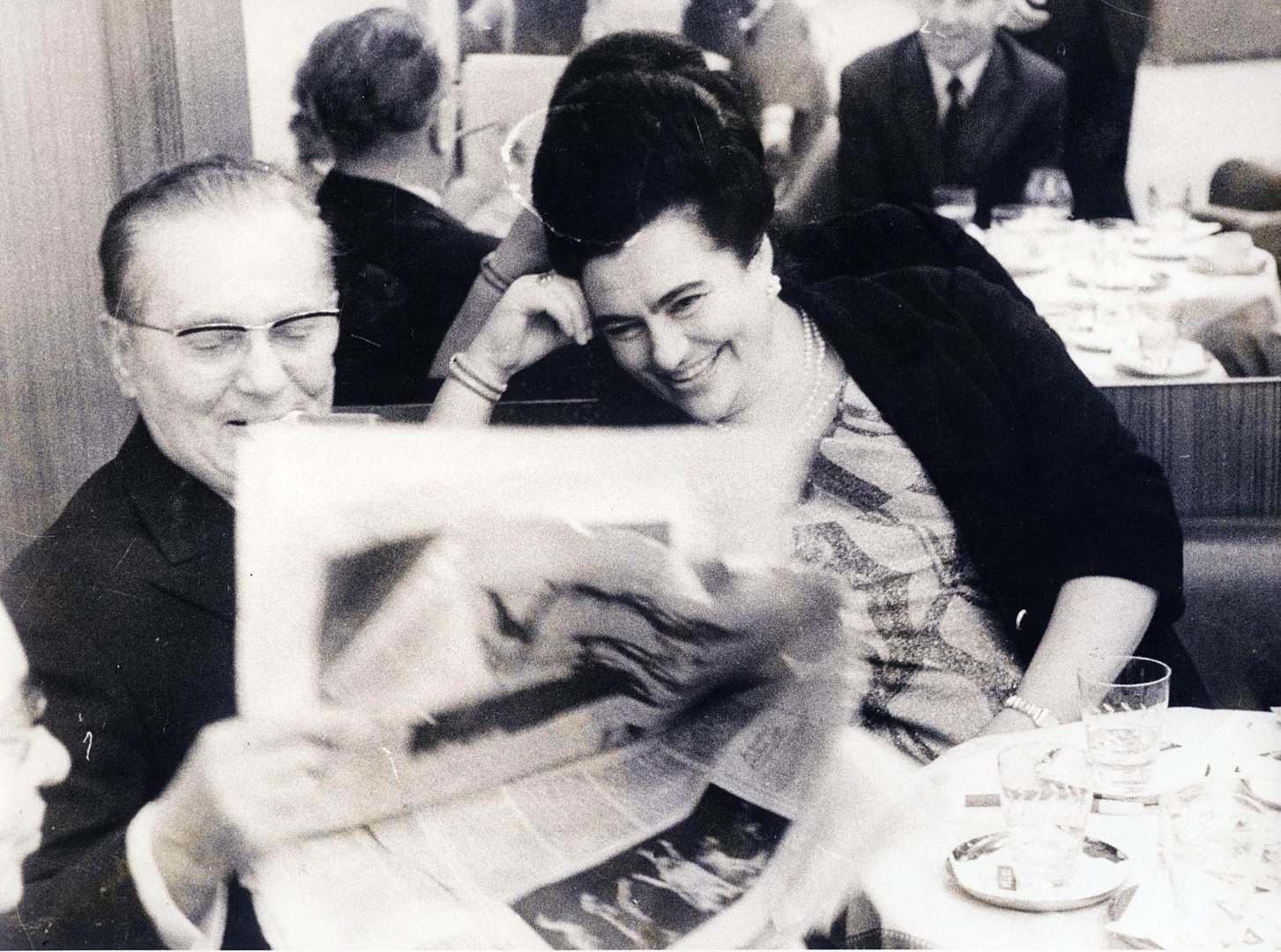
Tito and Jovanka reading Delo in Hotel Slon, on Tito Street, in 1969. Wikimedia
5. The present day prison hostel in Metelkova was where Janez Janša, an activist in the 1980’s, was imprisoned.
One of Ljubljana’s alternative culture hubs, now known as Metelkova for the street that it fronts on, has a prison that has been converted into a hostel. During the late 1980’s Metelkova was a barracks for the Yugoslav People’s Army, which got abandoned after the Slovenian war of independence. The prison hostel in it was once a very real military jail where politician Janez Janša was imprisoned after leaking classified People’s Army documents to Mladina, a magazine that, at the time, was officially the communist party’s youth magazine. I describe Metelkova as a functioning barracks toward the end of Tito’s Lost Children Book One and in the beginning of Book Two: Croatia.
The prison in Metelkova before the area became a squat. Source: Hostel Celica. Below, the place now. Source: JL Flanner
6. Technically speaking, Slovenia declared war on Yugoslavia, not the other way around.
When you hear about the Ten-Day-War, it often sounds as if the scrappy Slovene defense forces went up against the overwhelmingly superior aggressor of the Yugoslav People’s Army and won. This is true; a People’s Army soldier fired the first actual shots in the war. However, the order to retaliate, should the People’s Army resist Slovenia’s independence, was given before those shots were fired. This means that, technically, Slovenia did not only win the war, it was the first to declare the war in the first place.
7. No one can agree on who gave the order for the Slovene Territorial Defense forces to engage the Yugoslav People’s Army.
To this day, both then-President Milan Kučan and Janez Janša, who was defense minister at the time, claim to have been the one to give the order for the Slovenian forces to fire at the People’s Army. This means no one really knows who gave the actual order to start the war. Spoiler Alert: in Tito’s Lost Children, this is because my main character gives the order and both Kučan and Janša have to cover up her existence!
8. After World War Two a large group of fighters was killed or forced into exile.
Walking around Ljubljana, you will doubtless notice the large number of plaques dedicated to the partisan fighters who fell fighting the fascists during the Second World War. However, there was also another group of soldiers that didn’t get plaques -- to put it mildly.
The Domobranci (Home Defenders) were composed of people who did not support the partisans and the Italians allowed them to band together to defend their homes. Eventually, the Nazis forced them into fighting on their side. Nevertheless, they were branded as traitors after the partisans’ victory and were either forced to flee, sent to ‘reeducation’ camps or shot in mass killing fields. Knowledge of this was largely suppressed during the Yugoslav times. Nowadays, when you hear Slovenes speak of the ‘complicated World War Two history,’ this is what they are talking about.
One of my characters in Tito’s Lost Children is a descendant of a Domobranec. She has to deal with the political fallout of this history and was inspired by one of my real ancestors, who I discovered while doing research for the books could possibly have been a Domobranci sympathizer.
9. There was a whole class of people who had their rights as citizens erased when Slovenia became independent.
After Slovenia declared independence in 1991 it erased many non-Slovene Yugoslav nationals living in Slovenia from its list of citizens. This functionally made them non-persons in Slovene society. The issue has not been addressed until relatively recently. Milan Aksentijević, one of the senior officers of the Yugoslav People’s Army in Slovenia, had this happen to him, even though he had lived in Slovenia for years and was married to a Slovene. Something similar happens to a fictional general in my books.
10. Mt. Triglav looks absolutely nothing like it does on the flag.
The climax of Tito’s Lost Children Book One takes place on the summit of Mount Triglav. While doing research for the books I ran across a number of pictures of the mountain and was quite hard pressed to find where the three peaks were. I guess they go in kind of a curve?
At one point, I resolved to finally climb Triglav as research for the books. My mountaineer friend just laughed and suggested that a ‘city rat’ like me should start with Šmarna Gora, a hill on the outskirts of Ljubljana, instead. I had to settle for watching YouTube videos about climbing Slovenia’s highest peak.
Tito’s Lost Children War One: Slovenia is available here.
In 1910 the Carniolan provincial assembly adopted a new electoral law for municipal elections, under which many women were granted suffrage.
At the time Ljubljana was a stronghold of the elitist Liberal Party, with the Slovenian People’s Party in opposition. At the provincial level, Slovenian People’s Party won an absolute majority in 1908 and their municipal electoral reform meant an attack on the advantageous position Liberals’ enjoyed in Ljubljana.
Liberals, who were mostly supported by the wealthy voters, were fierce opponents of universal, equal and women’s suffrage. The Slovenian Catholic political camp in Carniola (liberals called them clericals) recognised women's municipal suffrage in 1910, and not only for taxpayers and landowners, but also explicitly for teachers and retired teachers. Besides, women were allowed to actually vote, not just authorise a man to go and cast a vote in their name, which was the practice until then.
In 1911, when women participated in Ljubljana municipal elections for the first time, police had to protect the separate female polling station on Bleiweiss street (today’s Prešeren street) and eventually closed the street down, since liberals organised protests during which they were yelling and spitting at mostly Ursuline women – nuns – who, as teachers, had a right to vote which they were also willing to exercise.
After WWI, on May 15, 1920 the Slovenian People’s Party granted universal suffrage for men and women at the municipal level. This was the first time universal women suffrage was introduced to Slovenian lands. It did not last long, however. The opponents of universal suffrage, local liberals and leaders in Belgrade managed to dismiss the right just two months before the local elections in 1921.
Apart from Slovenian People’s Party, the social democrats, communists and Croatian farmers’ party also stood in favour of women suffrage.
Women were granted the right to vote again in 1945, when the communists took power. However, given the one-party system and a lack of true choice, we can conclude that Slovenian men and women were finally granted equal suffrage with Slovenian first democratic elections in 1990.
In 1786 Emperor Joseph II ordered that the Discalced Augustinians monastery in Ajdovščina, Ljubljana, be rearranged into the first civilian hospital in Slovenian lands.
Among the reasons why Ajdovščina monastery was chosen over the Franciscan monastery at Vodnik square, another venue considered, were given its more appropriate interior design, beautiful garden and fresh air from Kamnik Mountains.
On the day of the opening, the hospital had three departments (internist, surgical and dermatological) and only 12 beds; three for women and nine for men. Two years later a psychiatric ward or – in the language of the day, “mad house” – was added. The hospital was managed by Brothers of Mercy from Trieste.
During the Illyrian Provinces and French occupation of Ljubljana, the French were in need of space for their wounded soldiers, and demanded the civilian hospital for this. The Brothers of Mercy refused to comply, so the French dismissed their order, seized the hospital, and handed its management to the city government. In 1849 the hospital was taken over by the provincial government of Carniola.
Due to lack of space a new psychiatric hospital was built in Polje, Ljubljana in 1881, and in 1889 children were also moved to a new paediatric hospital at Streliška street. In 1888 the Carniolan government decided to build an entirely new hospital on Zaloška street, Ljubljana. Construction work started in 1893 and was expected to be finished in 1896.
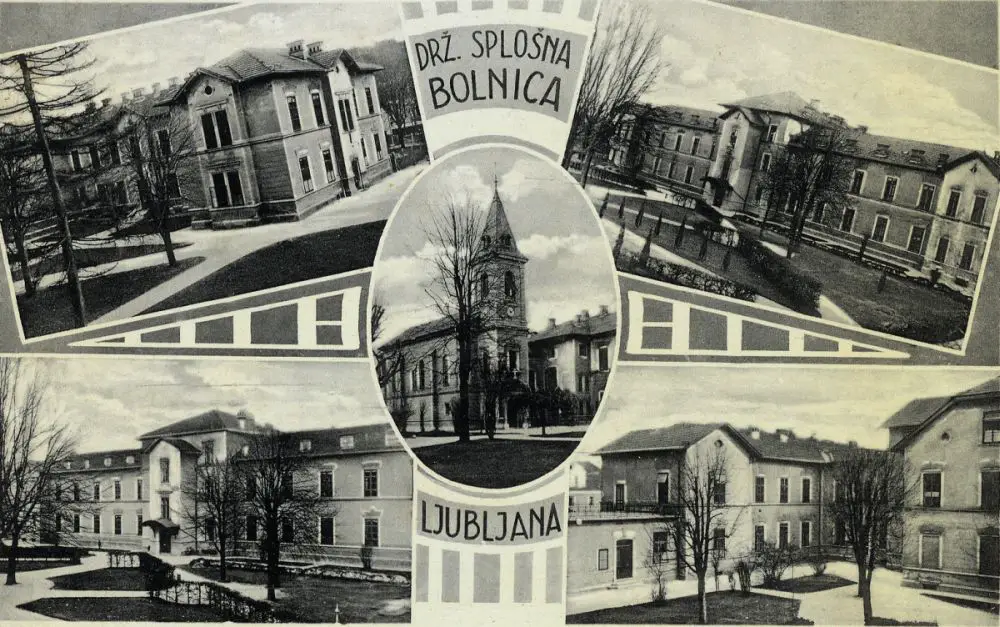
However, the damage caused by Ljubljana earthquake in 1995 forced the authorities to move the patients in old Ajdovščina hospital into tents in the hospital garden, and complete the work on the new hospital in the same year.
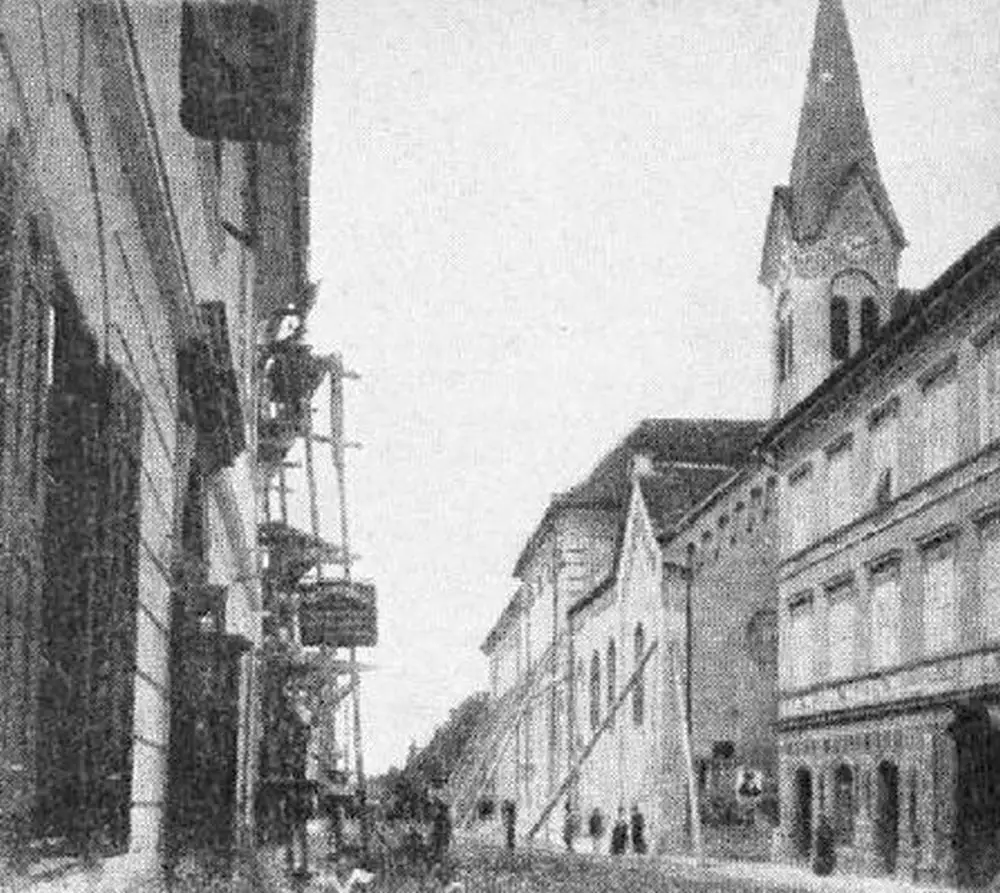
Ajdovščina monastery was so heavily damaged by the earthquake that the entire building had to be pulled down. In its place two secessionist buildings were erected at the addresses of Slovenska street 44 and 46: the Sloveniasport building (1906), designed by Ciril Metod Coch, and Hribar house (1905), designed by Max Fabiani.
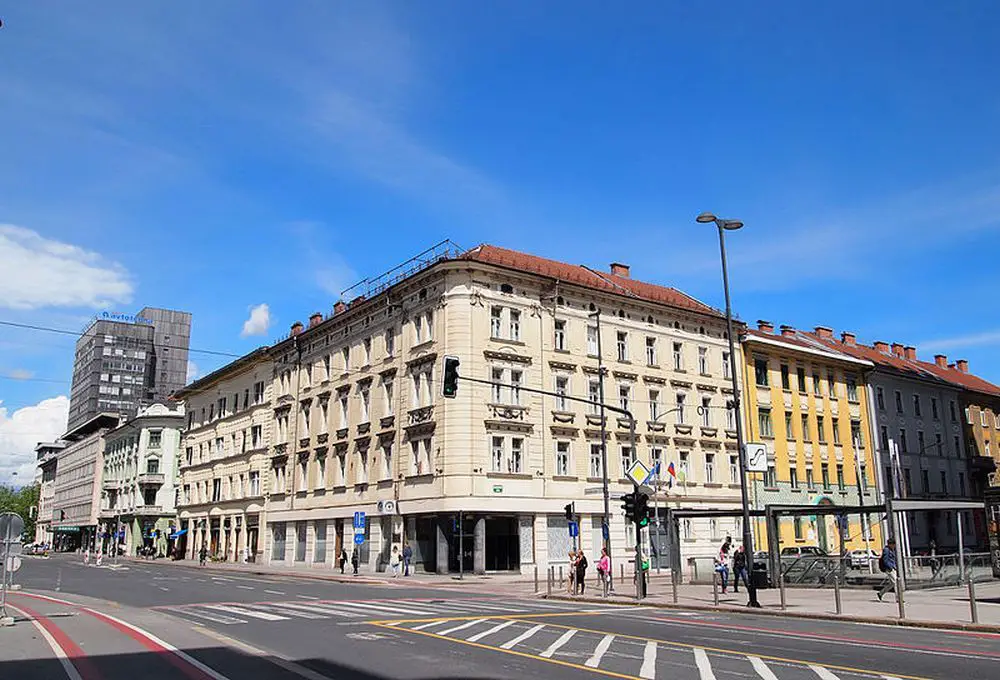
Sloveniasport building with Hribar house to its left, 2014 Photo: Tia Monto, Wikimedia Commons
In memory of the hospital a memorial plate was built into the façade of Sloveniasport.
In 1888 the Cyril and Methodius Society established the first Slovenian school in the city of Trieste. On today’s date after years of efforts, Slovenes from Trieste finally got a school in their mother tongue. At the time around a quarter of the city’s population spoke Slovenian, while the rural areas surounding the city were mostly Slovene.
Until then education in the Slovenian language was opposed by the Italian nationalist elite, defending the exclusivism of the Italian schools, a means against “Slavization” and a guarantee of the Italian-only image of Trieste. The city children of Slovenian parents were thus only able to attend Italian schools, which promoted national assimilation.
The Cyril and Methodius School in Trieste performed its invaluable mission until the forced fascist abolition in 1930.
In 1809 Napoleon signed a decree establishing a special status zone called the Illyrian Provinces (Slo: Ilirske province), subordinated directly to the French central government. It included western Carinthia with Villach, Gorizia, Trieste and its surroundings, Istria, part of Croatia with Karlovac, Dalmatia with Zadar, the Republic of Dubrovnik and Boka Kotorska. Ljubljana became the administrative and cultural capital of the provinces.
The purpose of this territorial formation was not to restore Slavic Illyria, as Valentin Vodnik wrote in Illyria Revived in 1811, but to create a buffer zone along the Adriatic coast, which would cut off German lands from the sea, and a direct land between France and the Middle East would be established across Istria and Dalmatia.
Despite the dissatisfaction of the Slovenian population with the severe economic crisis (trade with Austrian lands was hindered) and the new tax burden and the recruitment of men into the French Army, the four years of rule under the French authorities were still quite important for the development of the Slovenian language and culture.
The first governor-general of the provinces Marshal August Marmont, made sure that elementary and middle school levels were all in Slovene, while Valentin Vodnik was in charge of providing textbooks. For this he published first Slovenian grammar written in the Slovenian language - Literacy or grammar for first schools. He also became a headmaster at a lower secondary school and headmaster of folk and art schools.
The integration of the Slovene lands into the Illyrian Provinces had a significant impact on the development of the Slovenian nationalist movement. However in 1813 Austria, following Napoleon’s defeat, regained its full control and sovereignty of the Slovenian lands, while Valentin Vodnik got into trouble for his support to the French. He was banned from working in schools in 1815 and died four years later.


